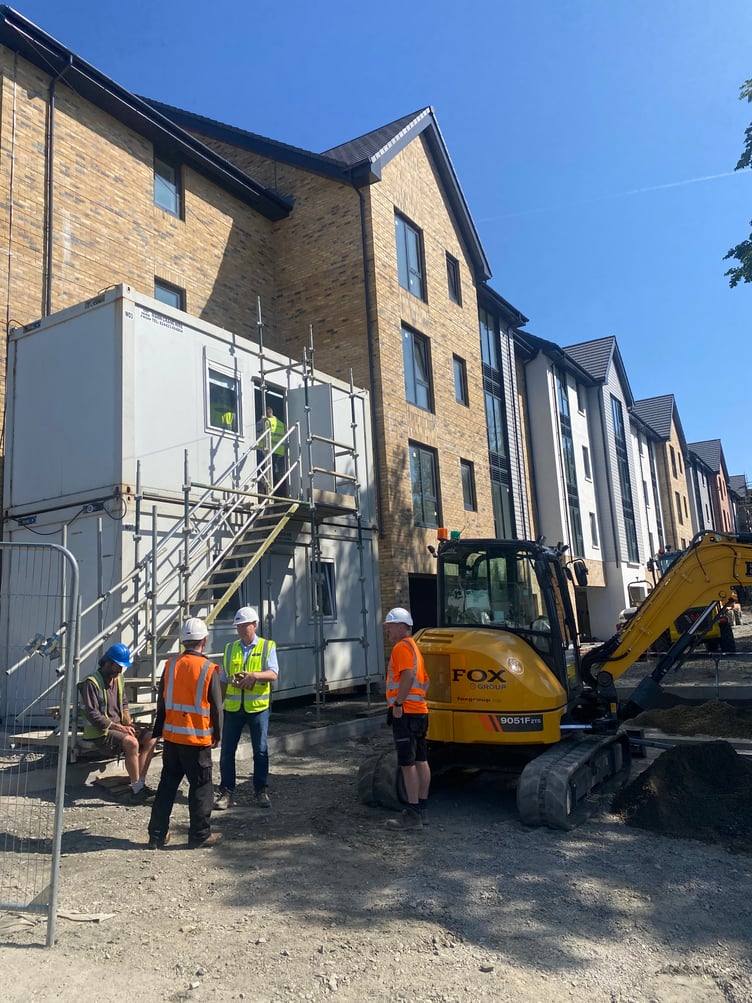A number of people have asked how it's going since I was elected as a city councillor on April 24.
Others, including a former very senior Tynwald colleague, have asked what I was thinking - suggesting that maybe now would have been a more appropriate time to take things easy and pursue more leisure activities.
After five years since my retirement from Tynwald, there were certain aspects that I missed.
The part of my duty that most fell into this category as a public representative was the face-to-face meetings with constituents and others - attempting to assist with any matter, large or small. Since my election, I’ve once again been busily involved on this basis.
All the time I was a Tynwald member, the sometimes complicated and diverse needs of housing policies always demanded a great deal of my time - and this is still the case.
For me, it was one of, if not the key issue at the last General Election and is a key part of any economic strategy.
That strategy should include encouraging younger people to return home after further education and training and, when necessary, importing additional skilled individuals to play their part in sectors crying out for such skills. Central to this is the need for affordable homes - either to buy or to rent.
I have been elected as deputy chair of Douglas City Council’s housing and property committee. Before I was elected, and since, I have taken the time to visit a number of people in their present accommodation or to report to officials concerns that have been passed on to me.
This is the only promise anyone can truly make - although I did notice some suggestions in election material island-wide that I believe time will prove unlikely to be delivered.
Amongst the situations highlighted to me - whether sat in front rooms or kitchens, or via email correspondence - are issues such as unneighbourly behaviour related to drug use, overcrowding, mental health concerns, living within abusive relationships, anti-social behaviour, poor quality private rental properties while waiting for local authority accommodation, trying to swap to more appropriate publicly-owned accommodation, high energy costs for those on limited incomes on top of expensive rent, empty council properties, private tenants under threat of eviction, and environmental health concerns, to name a few.
One of the key priorities must be to ensure the public authority housing stock meets, as closely as possible, ongoing and flexible demographic requirements.
For example, larger four-bedroom properties in which families have lived for a long time and are now under-occupied, as adult children have moved on, are in contrast to the insufficient supply of such properties for young families.
We need to demonstrate the real advantages of smaller properties - lower maintenance, easier upkeep, and energy savings.
My personal view is that couples who choose to downsize should, wherever possible, be allocated a two-bedroom apartment or equivalent.
With age, this option is often the most practical solution for a number of reasons. Years ago, Tony Brown suggested—and I supported—the idea of a scheme for older people who wished to take on a mortgage. Under such circumstances, obtaining a mortgage is fraught with difficulty. But if supported by government, such a move could help bridge the funding gap and enable a transition from local authority accommodation. Sadly, nothing of real impact has occurred.
In the 1970s, certain estates were developed on a self-build basis with support from local and central government. Looking back, it appears that for many this was an ideal solution - sharing trades and working alongside others in the same situation.
There was indeed a government loan and mortgage scheme that benefited many people when they most needed a helping hand.
Much later, there was a knee-jerk reaction to an overheating economy and an effort to quickly build houses to address the issue.
The simple fact is that estate development needs proper planning, including community facilities, neighbourhood shops, pubs, green and play areas, and more, in order to be successful.
One of the most successful schemes in my opinion, especially with regard to the demographic I mentioned earlier, is sheltered housing - now more appropriately described as ‘independent living’.
Examples in Douglas alone include Waverley Court near Murray’s Road School (76 apartments), Hazel Court in Pulrose (38 apartments), and Ballanard Court in Willaston (22 bedsits).
Each apartment has its own front door; people come and go freely and can decide whether or not to socialise in shared areas.
Another good facility, where I have visited friends, is Heywood Court near Signpost Corner in Onchan.
It accommodates both sheltered housing and ex-service personnel. I would certainly endorse further schemes of this type.
There are currently a number of vacant sites owned by government in the Douglas area alone. It would be good to see overdue action on these.
From the perspective of public authority housing, such schemes make sound economic sense over an extended period, as well as fulfilling an important social need.
Brownfield development is a really positive measure, as once-derelict sites can be brought back into positive public use. Can we talk?
South Douglas, before boundary changes in 2013, included parts of Lord Street flats, Hillside Avenue, and other areas.
In 2022, the Council completed the Thomas Keig and Mary Halsall Apartments - 66 one- and two-bedroom units named after former mayors - on Peel Road just before the Brown Bobby.
These are high-quality, energy-efficient public authority homes, and, from speaking with former constituents, have been well received.
The old flats were outdated and difficult to access, whereas these new ones offer level access and lifts.
Last Friday, I had the opportunity - along with other councillors on the housing committee - to view progress on the James Brown Apartments (no, not that James Brown!) on the former Willaston Police Station and Methodist Hall site opposite the shops.
So, which James Brown, you may ask? He was a Liverpool-born printer, editor, and political activist. He moved to the Island in 1846 at age 31, where he founded the Isle of Man Times newspaper and played an important part in the democratisation of the House of Keys.
In 1863, when Douglas Town Commissioners applied for more powers and were rejected by the House of Keys, it started a fight for democratic rights that was covered in the newspaper by the reformer.
I’ll return to this story in more detail in the future, but suffice it to say that, from my perspective, the name of the new apartments recognises a champion of democracy and, in particular, a democratically elected House of Keys - which I welcome.
The James Brown Apartments will be available for occupancy before the end of 2025.
They consist of 48 two-bedroom, level-access apartments.
Those already completed look excellent.
They include all the best environmental features such as solar panels, ground source heat pumps, and other modern technologies that go over my head - but they will make these apartments the flagship development for future public authority housing in the island.
Good news!


.png?width=209&height=140&crop=209:145,smart&quality=75)

.jpeg?width=209&height=140&crop=209:145,smart&quality=75)